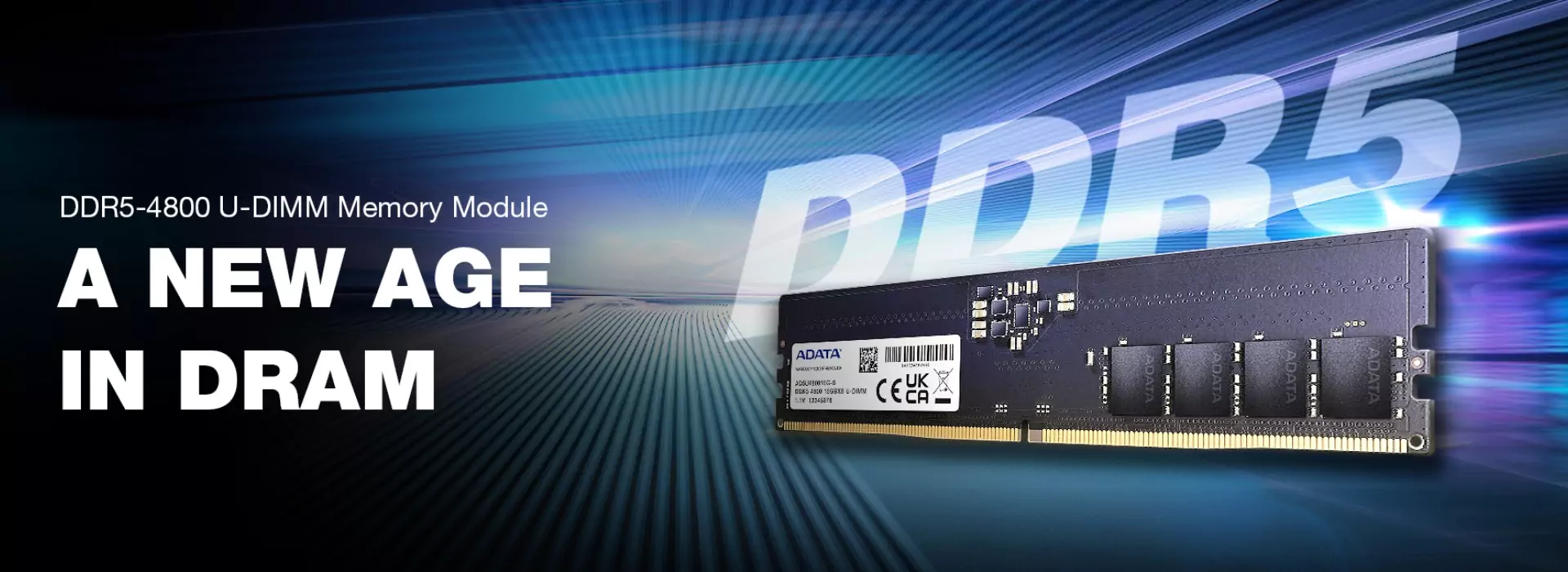
Product categories
- Components 0
- Consumer Electronic Accessories 0
- Cable 0
- Charger 0
- Docking Station 0
- Power bank 0
- Monitors 0
- Peripheral 0
- Storage 1
- DRAM 0
- Flash Memory 0
- HDD 0
- Memory Card 0
- SSD 0
DRAM (Dynamic Random-Access Memory) Module:
A DRAM module refers to a memory module that contains Dynamic Random-Access Memory (DRAM) chips, commonly used as system memory in computers, laptops, servers, and various electronic devices. DRAM is a crucial component for storing data that needs to be accessed quickly by the processor, and the module serves as the physical component housing multiple DRAM chips.
Key Features of DRAM Modules:
- Dynamic Nature:
- Unlike SRAM (Static RAM), DRAM is called "dynamic" because it stores each bit of data in a capacitor, which needs to be constantly refreshed to maintain the data. Without this periodic refresh, the information would be lost. This makes DRAM slower than SRAM but allows it to be cheaper and more compact.
- Capacity:
- DRAM modules come in a variety of capacities, typically ranging from 4GB to 64GB or more for consumer products, and even larger sizes are available in high-performance or enterprise settings.
- Form Factors:
- The most common DRAM form factor for desktop PCs is the U-DIMM (Dual Inline Memory Module), which comes in different sizes like DDR4 DIMMs and DDR5 DIMMs. For laptops, the SO-DIMM (Small Outline DIMM) form factor is used, offering a more compact design.
Types of DRAM:
DDR (Double Data Rate):
-
- DRAM modules today primarily use DDR technology, where data is transferred on both the rising and falling edges of the clock signal. It has evolved from DDR, DDR2, DDR3, DDR4, and the latest DDR5, with each generation providing higher speeds and better efficiency.
Over clock
An overclocked DRAM (Dynamic Random-Access Memory) module refers to a memory module that has been manually configured to run at a higher speed than its default factory setting. Overclocking is typically done to improve system performance, particularly in tasks that are memory bandwidth-dependent, such as gaming, content creation, and running memory-intensive applications.
DRAM (Dynamic Random-Access Memory) Module:
A DRAM module refers to a memory module that contains Dynamic Random-Access Memory (DRAM) chips, commonly used as system memory in computers, laptops, servers, and various electronic devices. DRAM is a crucial component for storing data that needs to be accessed quickly by the processor, and the module serves as the physical component housing multiple DRAM chips.
Key Features of DRAM Modules:
- Dynamic Nature:
- Unlike SRAM (Static RAM), DRAM is called "dynamic" because it stores each bit of data in a capacitor, which needs to be constantly refreshed to maintain the data. Without this periodic refresh, the information would be lost. This makes DRAM slower than SRAM but allows it to be cheaper and more compact.
- Capacity:
- DRAM modules come in a variety of capacities, typically ranging from 4GB to 64GB or more for consumer products, and even larger sizes are available in high-performance or enterprise settings.
- Form Factors:
- The most common DRAM form factor for desktop PCs is the U-DIMM (Dual Inline Memory Module), which comes in different sizes like DDR4 DIMMs and DDR5 DIMMs. For laptops, the SO-DIMM (Small Outline DIMM) form factor is used, offering a more compact design.
Types of DRAM:
DDR (Double Data Rate):
-
- DRAM modules today primarily use DDR technology, where data is transferred on both the rising and falling edges of the clock signal. It has evolved from DDR, DDR2, DDR3, DDR4, and the latest DDR5, with each generation providing higher speeds and better efficiency.
Over clock
An overclocked DRAM (Dynamic Random-Access Memory) module refers to a memory module that has been manually configured to run at a higher speed than its default factory setting. Overclocking is typically done to improve system performance, particularly in tasks that are memory bandwidth-dependent, such as gaming, content creation, and running memory-intensive applications.

